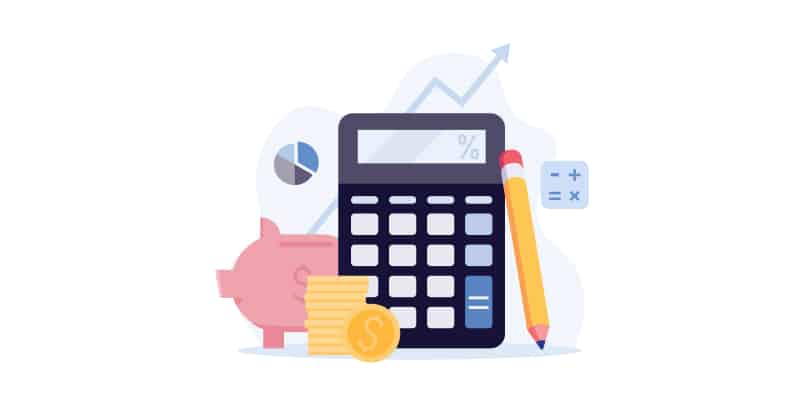Selling Collectibles on eBay: How to Report Your Income


File your self employed taxes with confidence.
Backed by our $100k accuracy guarantee.
Did you know that collectible sales come with their own tax rules? Here are the tax implications of selling collectibles and how to report the sale of a collectible asset on your income tax return.
Does selling collectibles count as income?
Yes, selling collectibles on eBay or a similar site counts as income that you need to report to the IRS. Collectible income is treated as a capital gain; however, collectibles come with their own unique tax rates and rules, which we’ll go over below.
What is a collectible?
The IRS defines a collectible as:
- Any work of art
- Any rug or antique
- Any metal, gem, stamp, or coin (with limited exceptions)
- Any alcoholic beverage
- Any other tangible personal property the IRS determines is a “collectible”
If an item has an inherent value due to its market rarity, you should consider it a collectible and report it as such on your tax return.
eBay’s collectible page can also give you a good idea of what items fall into the collectibles category. Some common examples are sports cards, Funko Pop! items, comic books, etc. If you can find it on eBay’s collectibles page, it is most likely to be considered a collectible by the IRS as well. (One exception to this is something like NFTs, which the IRS considers to be digital assets and does not classify as collectibles.)
Can I deduct expenses for selling collectibles?
If you are in the business of selling collectibles, your expenses are deductible like any other small business. However, if you only sell collectibles as a hobby, any expense costs — such as restoration costs for refurbishing an old antique — are not tax-deductible as of 2018.
How do I determine my cost basis for collectibles?
Typically, your cost basis (or basis) for a collectible is equal to the price you paid for the item plus any associated transaction fees, such as fees paid to eBay when selling your item.
If you inherited the item, your basis would be determined by its fair market value (FMV) at the time of inheritance. A good way to determine an inherited item’s FMV is to get an expert appraisal and keep it with your records.
What if I don’t know the value of my collectible?
If you aren’t sure about the value of your collectible, it might be in your best interest to get an expert appraisal. This can prove the item’s value at the time of acquisition if the IRS ever asks for it.
If you can’t get an appraisal, a little research on your item goes a long way. Search for the same or similar collectibles online and look at the asking prices. This can help you determine the item’s fair market value and conclude your basis accordingly.
What is the tax rate on collectibles?
The IRS considers collectibles “alternative investments” for tax purposes, meaning you pay taxes on any net capital gains you earn selling collectibles. However, collectible capital gains tax rates are different from usual capital gains tax rates.
Here’s what you need to know:
- Short-term capital gain: Holding the collectible for one year or less before selling it is considered a short-term capital gain. Short-term gains are taxed at ordinary income tax rates.
- Long-term capital gain: In tax year 2022, if you held the collectible for longer than one year, your capital gain is taxed at 28 percent (or your ordinary income tax rate, if lower than 28 percent). This rate is higher than the typical 0, 15, or 20 percent tax rate on non-collectible capital gains.
How do I calculate a capital gain or loss on my collectible?
To determine your net capital gain (or loss) for a collectible, you must take the collectible’s sale price minus your basis.
Here are some examples:
Suppose you bought an antique for $3,000 a few years ago. You spent $500 restoring the item, adjusting your cost basis to $3,500 (if you only sell as a hobby, you would not be able to deduct these restoration costs). Now let’s say you sell the antique in 2022 for $5,000. eBay takes $500 in seller fees, increasing your basis to $4,000. Your net profit, in this instance, would be $1,000 ($5,000 – $4,000), which you’d report to the IRS.
Now let’s say you inherited the exact same item instead. The antique’s fair market value at the time of inheritance was $3,000, making that your cost basis even though you paid $0 for the item. You eventually sell the table on eBay for $5,000. You pay $500 in eBay fees, increasing your basis to $3,500. This would result in $1,500 in taxable income to report on your tax return.
Can I deduct a loss from selling a collectible?
Reducing your capital gains by your capital losses depends on if you sell collectibles as a business and how you use the collectible. If you used the item for personal use, such as displaying it or using it in your home, the IRS generally does not allow you to claim a capital loss on such sales, even if you sell collectibles for a living.
However, if you bought the collectible purely for resale purposes and didn’t use it for personal use — you kept the item in storage instead of displaying it, for example — you can reduce your capital gains by your capital losses, assuming you are a legitimate for-profit business. If you sell collectibles that you acquired for personal use and not for profit, you would be unable to offset your gains with your losses.
This gives professional collectible investors a tax benefit because you can time the sale of certain collectibles so that your losses offset your gains. For example, if you have $5,000 in capital gains to report this tax year, you can sell other collectibles that you expect to sell at a loss to reduce your taxable gains.
How do I report the sale of a collectible on TaxAct?
If you choose to e-file with TaxAct®, we’ll ask you interview questions about what kind of income you have. If you sold investments or had income from a hobby (also called “activities not for profit” in our software), you’ll be able to check the appropriate boxes. As you answer our interview questions about what you sold, we’ll determine what tax forms you need and guide you through the reporting process.
Collectibles recap
Selling collectibles means reporting any profits you made as capital gains. Collectible sales have their own tax consequences — a higher tax rate capped at 28 percent — and whether you can deduct expenses or losses depends on if you sell collectibles as a for-profit business or simply as a hobby.
Either way, TaxAct is here to help you correctly report any income from collectibles you sold on eBay. Get started by clicking one of the buttons below.






